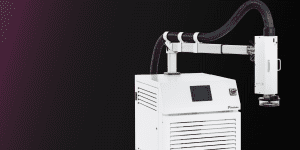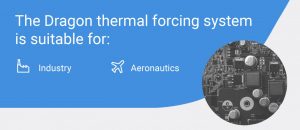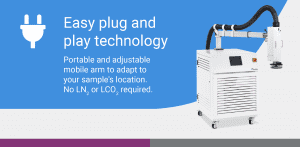The Applications of a Temperature Forcing System/Thermal Air Conditioner

What is a Temperature Forcing System?
A thermal air conditioning unit or thermal air conditioner, is used to test items by subjecting them to rapid temperature changes and temperature cycling. The device determines an item’s resistance to temperature by setting a precise thermal environment that can quickly change within seconds.
It uses a direct temperature-controlled stream of hot or cold air to provide a precise thermal environment. The temperature of the air stream can be changed in seconds, within the range of -70°C to + 250°C.
What are the Applications of a Temperature Forcing System?
Temperature forcing systems are used in electronic and non-electronic assemblies and sub-systems for the following range of applications.
- Failure analysis testing
- Thermal shock
- Functional testing
- Simulation testing
- Accelerated life testing
- Cyclic temperature
- Environmental test screening
- Material fatigue
Rapid Failure Analysis
Rapid Failure analysis is the process of investigating product failures in order to troubleshoot and repair the underlying issue. Failure analysis can help pinpoint the specific stages or operations where different problem types arise and provide a framework for establishing internal processes to counteract these opportunities for error. This helps identify discrepancies and other inaccuracies early on, allowing the producer to refine their designs while it’s still economical to do so.
Thermal Shock
Thermal shock is a variation in temperature which causes tension in a material. It frequently causes breakage in the material, and is most common in brittle materials such as ceramics. This is a process that takes place abruptly when there is a sudden variation of temperature, either from hot to cold or vice versa.
Accelerated Life Testing
Accelerated life testing is the process of testing a product by subjecting it to conditions (stress, strain, temperatures, voltage, vibration rate, pressure etc.) in excess of its normal service parameters in an effort to uncover faults and potential modes of failure in a short amount of time. By analysing the product’s response to such tests, engineers can make predictions about the service life and maintenance intervals of a product.
Environmental Test Screening
Environmental test screening is when companies expose their products to set environmental conditions in test chambers to identify potential defects in components or designs. It often takes place during manufacturing and the conditions can include everything from extreme temperatures, variations in humidity, vibrations, dust, or even physical aspects like drops or flexibility tests. The concept was designed by the U.S. military and later applied to aerospace technology.
Semiconductor Manufacturing
One of the main applications of temperature forcing systems is in the semiconductor manufacturing process, where they are used from product development in engineering labs to final assembly and test on the production floor.
As an integral part of the qualification and characterisation process, engineers verify that the semiconductor is operational at different environmental conditions such as extreme temperatures. The test stages of engineering and production include burn-in, electronic, hot and cold testing at specific temperatures, and other environmental test simulations to meet specifications within industries such as the automotive and airspace sectors. This is because, once put in real world applications, these semiconductor devices are often exposed to extreme environmental conditions.

How can Froilabo’s Dragon Temperature Forcing System help you?
The Froilabo Dragon is a first class temperature forcing system which provides fast and accurate results. This versatile and stable air generator is perfect for heating electronic components and printed circuits boards, performing climatic simulations, electronic characterisations, temperature cycling and targeted freezing.
The Dragon temperature forcing system can operate between -75°C and +250°C with adjustable dry airflow up to 8.4 L/s and excellent thermal stability <0.5°C. The Dragon can be used 24 hours a day, 7 days a week and is capable of rapid temperature rise and fall from -55 °C to +150 °C in 7 seconds and from +125°C to -55°C in 14 seconds.
At the end of a test campaign, the system blows dry air into the workspace to prepare it for the next campaign. For safety, when the arm is in the up position airflow is attenuated, noise reduced and temperature adjusted to +20°C, automatic return to operating parameters when the head is returned to the down position.

Find out more about our state of the art Temperature Forcing System.
Get in Touch for More Information about our Temperature Forcing System
If you have found this article helpful and would like to learn more about how the Froilabo Dragon Temperature Forcing System can meet your semiconductor testing requirements, please don’t hesitate to get in touch with a member of our team today.
If you would like to stay up to date with future news, products and research from Froilabo, why not follow us on social media and sign up to our infrequent eNewsletter via the links below.



